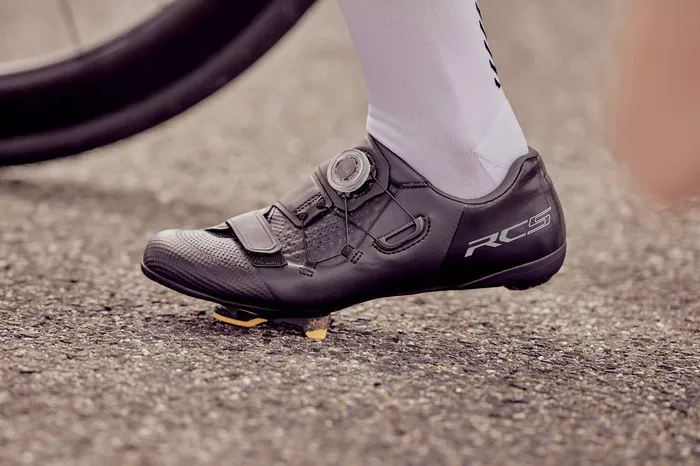Cycling is a sport that demands precision, efficiency, and power. Whether you’re a seasoned cyclist or just starting out, understanding the role of cleats in cycling is crucial for optimizing performance and ensuring a comfortable ride. Cleats are an essential component of cycling shoes that connect the rider to the pedals, allowing for efficient power transfer and control. In this article, we delve into the intricacies of cleats, exploring their function, types, fitting, and maintenance.
Understanding Cleats: The Foundation of Cycling Efficiency
At its core, a cleat is a small, often metal or plastic attachment that is affixed to the sole of a cycling shoe. These cleats then clip into matching mechanisms on the pedals, creating a secure connection between the rider and the bike. This connection is pivotal for several reasons:
1. Efficient Power Transfer: Cleats ensure that every ounce of force exerted by the cyclist is directly transmitted to the pedals. This efficiency is particularly vital during high-intensity efforts, such as climbing or sprinting, where maximizing power output is paramount.
2. Enhanced Control: By firmly anchoring the feet to the pedals, cleats provide cyclists with greater stability and control over their bikes. This is especially advantageous when navigating technical terrain or executing sharp turns.
3. Reduced Fatigue: A secure connection between the feet and pedals helps distribute pressure more evenly across the foot, reducing the risk of discomfort and fatigue during long rides.
Types of Cleats: Navigating the Options
Cleats come in various designs, each tailored to different cycling disciplines and personal preferences. The two most common types are:
1. SPD (Shimano Pedaling Dynamics): SPD cleats are widely used in mountain biking, touring, and recreational cycling. Characterized by a two-bolt attachment system, SPD cleats offer a balance of walkability and secure engagement. They are favored by off-road riders for their mud-shedding capabilities and ease of use in variable terrain.
2. Road Cleats: Road cleats, exemplified by systems like Look, Shimano SPD-SL, and Speedplay, feature a three-bolt configuration optimized for road cycling. These cleats typically offer a larger surface area for improved power transfer and stability, making them ideal for high-speed riding and competitive events.
While SPD and road cleats represent the primary categories, numerous variations and proprietary systems exist within each, catering to specific preferences and performance requirements.
Finding the Perfect Fit: Cleat Positioning and Adjustment
Achieving optimal performance with cleats hinges on proper positioning and adjustment. Several factors influence cleat placement, including foot anatomy, pedaling biomechanics, and personal comfort preferences. Key considerations during fitting include:
1. Fore-Aft Position: Cleats should be positioned to align the ball of the foot directly over the pedal axle. This placement optimizes power transfer and minimizes strain on the ankle and knee joints.
2. Lateral Adjustment: Cleats can typically be adjusted laterally to accommodate differences in foot alignment and stance width. Ensuring symmetrical alignment helps maintain balance and prevent undue stress on the knees.
3. Angular Alignment: Some riders benefit from adjusting the angle of their cleats to match the natural rotation of their feet during pedaling. Correcting excessive inward or outward rotation can alleviate discomfort and improve pedaling efficiency.
4. Float Adjustment: Float refers to the degree of lateral movement allowed by the cleats before disengagement from the pedals. Adjusting float can help mitigate hot spots and pressure points, particularly for riders prone to knee or foot pain.
Professional bike fittings and consultations with experienced cyclists or coaches can provide invaluable guidance in achieving the optimal cleat setup for individual riders.
Maintaining Cleats: Preserving Performance and Longevity
Proper maintenance is essential for preserving the performance and longevity of cleats. Regular inspection and upkeep can prevent premature wear and ensure consistent engagement. Maintenance tasks include:
1. Cleaning: Periodically remove dirt, debris, and grime from cleats using a soft brush or cloth. This prevents buildup that can interfere with engagement and retention.
2. Lubrication: Apply a small amount of lubricant to the moving parts of cleats, such as the engagement mechanism and release springs. Lubrication helps maintain smooth operation and prevents corrosion.
3. Replacement: Monitor cleats for signs of wear, such as excessive play or deformation of the engagement surfaces. Replace cleats as needed to maintain optimal performance and safety.
By incorporating these maintenance practices into their cycling routine, riders can prolong the lifespan of their cleats and ensure consistent performance on the road or trail.
Conclusion
In the dynamic world of cycling, every component plays a crucial role in overall performance and comfort. Cleats serve as the vital link between rider and machine, facilitating efficient power transfer, control, and stability. By understanding the function, types, fitting, and maintenance of cleats, cyclists can unlock their full potential and elevate their riding experience. Whether conquering mountain trails or chasing podiums on the road, the mastery of cleats is a cornerstone of success in the world of cycling.

